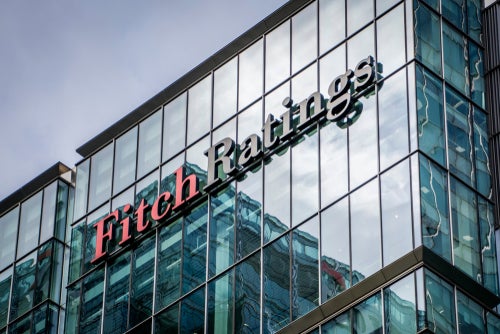
Daily rentals in vogue despite
market downturn. Claire Hack reports.
Like the UK, and indeed the rest of
the world, rail finance in continental Europe has suffered as a
result of the economic downturn, but this is most visible in the
financing of freight stock, rather than the curtailment of major
passenger transport projects.
According to Martin Metz, head of land
transport finance at DVB Bank, activity – or inactivity – in rail
freight traffic provides a number of key early indicators for
general economic development.
“This includes, for example, wagon load figures
in the US, as much as when freight cars, having been parked during
economic turmoil, are returned to revenue-earning service,” Metz
said.
How well do you really know your competitors?
Access the most comprehensive Company Profiles on the market, powered by GlobalData. Save hours of research. Gain competitive edge.

Thank you!
Your download email will arrive shortly
Not ready to buy yet? Download a free sample
We are confident about the unique quality of our Company Profiles. However, we want you to make the most beneficial decision for your business, so we offer a free sample that you can download by submitting the below form
By GlobalData“We are noticing, more and more, that freight
stock is being pulled out of the sidings and back into service.
“A decent number of cars are still not
employed, but the situation is turning more positive. In other
words, the economy is kicking in again, slowly but
consistently.”
In terms of locomotives, Metz said, the
situation has not yet “relaxed” and a number of lessors are
continuing to focus on keeping their fleets employed, including
offering them on a “pay per-day” basis.
“This is good, as running a locomotive is
always better than parking it, and it also serves operators who
want it for a limited job – say seven days, and then they would
simply give it back,” Metz said.
 “Returns on a per-day basis are higher than those on
“Returns on a per-day basis are higher than those on
long-term leases, as the risk of locos being returned quickly and
standing around idle for another 20 or 30 days is substantial.
“Rental rates would therefore naturally need to
cover this risk with a mark-up.”
New investment in freight vehicles remains low
in Europe, Metz said, with “not much new to finance” – a trend
which has meant his team is currently focused on “secondary
transactions”.
This includes refinancing used rolling stock
fleets, sold, for example, by companies pulling out of the market,
or perhaps purchasing existing transactions from banks clearing
their books, Metz said.
Freight, furthermore, has suffered more than
passenger transport as commuter trains continue to support the
market, according to Frank Hermandung, senior vice-president of
rail finance at HSH Nordbank.
Indeed, according to DVB Bank’s 2009 annual
report, freight rolling stock lease rates dropped by as much as 50%
year-on-year, although purchase prices “did not go down
significantly as manufacturers are generally unwilling to lose
money on production”.
Hermandung said: “The passenger market
specifically is made up of relatively long-term contracts with
terms usually between 7 and 12 years.
“It is not very vulnerable to economic change
and it is not very volatile – commuters still use the train to get
to work even in an economic downturn.”
The question, Hermandung added, is whether
there will be enough competition from private operators to provide
for competitive pricing and successful tendering.
“This depends on the quality of tendering
documents and structures that will be invited by the tendering
agencies,” he said.
However, while freight may be more susceptible
to economic volatility, it has benefited from increased road
congestion, meaning companies more frequently turn to rail networks
to transport goods, according to Dieter Fennema, also an SVP at HSH
Nordbank.
Fennema added: “The problem is that the rail
freight market is not using its inherent strengths, rather it is
often benefiting from the weakness of road transport.
“Volumes are on the up again since January 2010
and utilisation of fleet is on the up again – it looks
promising.”
And unlike the UK, which is subject to
value-for-money reviews by its government, investment on the
passenger side remains high in Germany, which is the biggest
market in Europe and elsewhere on the continent.
“There has been a liberalisation in the rail
market for more than 15 years now, with private operators being
allowed to tender for regional passenger franchises along with
incumbent operators,” Metz said.
“There are requirements to tender out almost
all regional franchises until 2018 and this is the biggest market
in Europe.
“There is definitely volume coming out of
those tenders and that is also the case for the Netherlands,
Sweden, Denmark and Poland. The big question is how to finance
it.”







